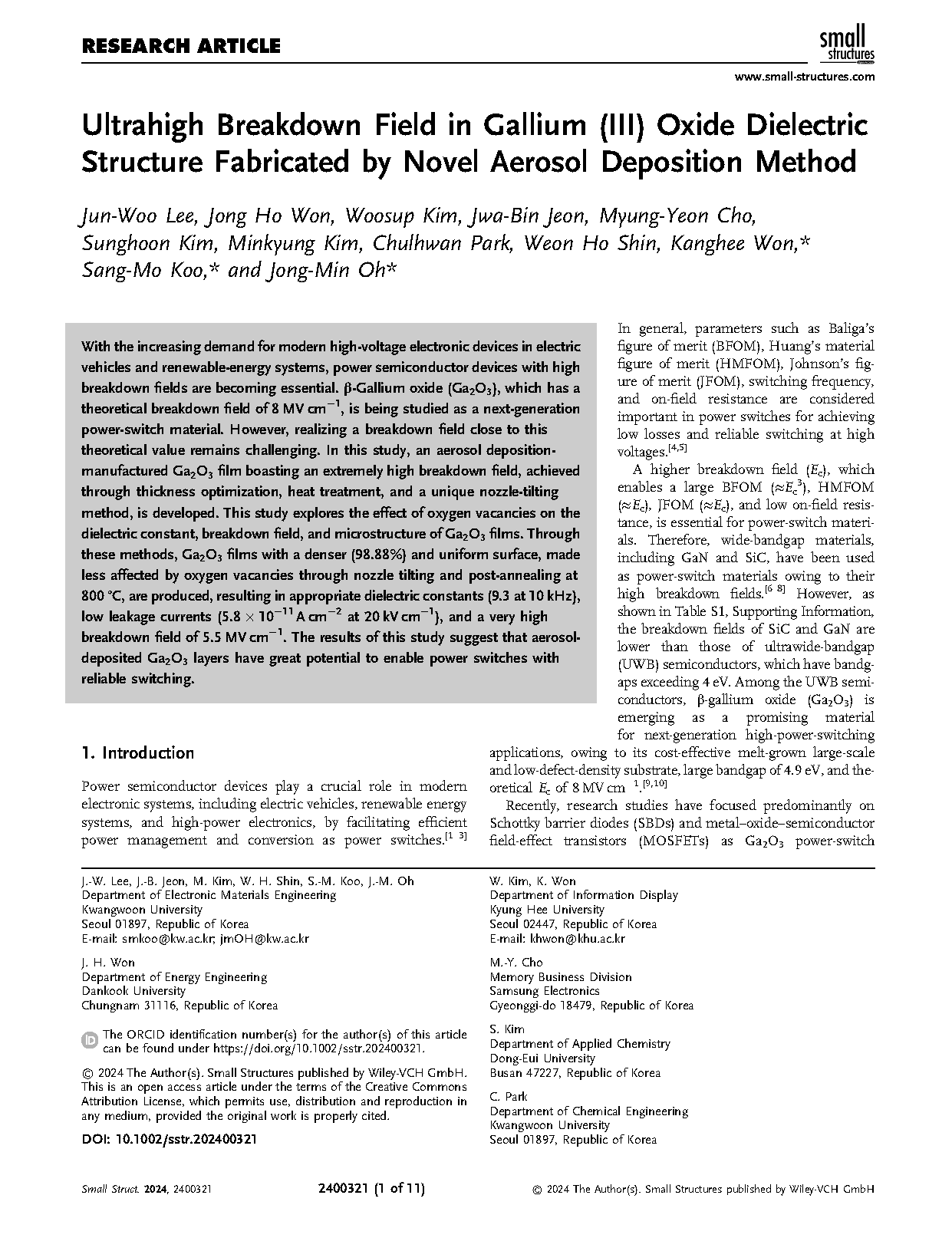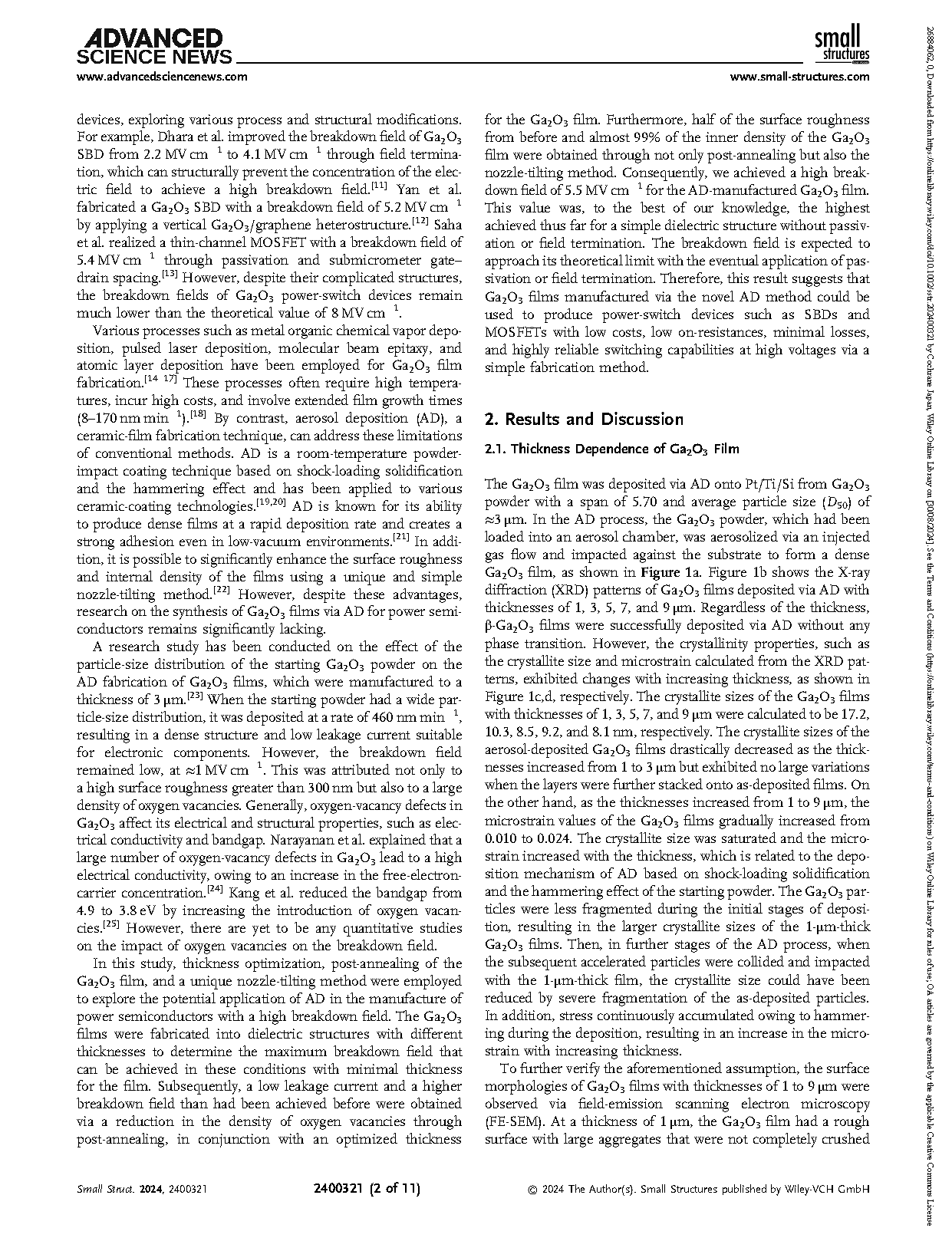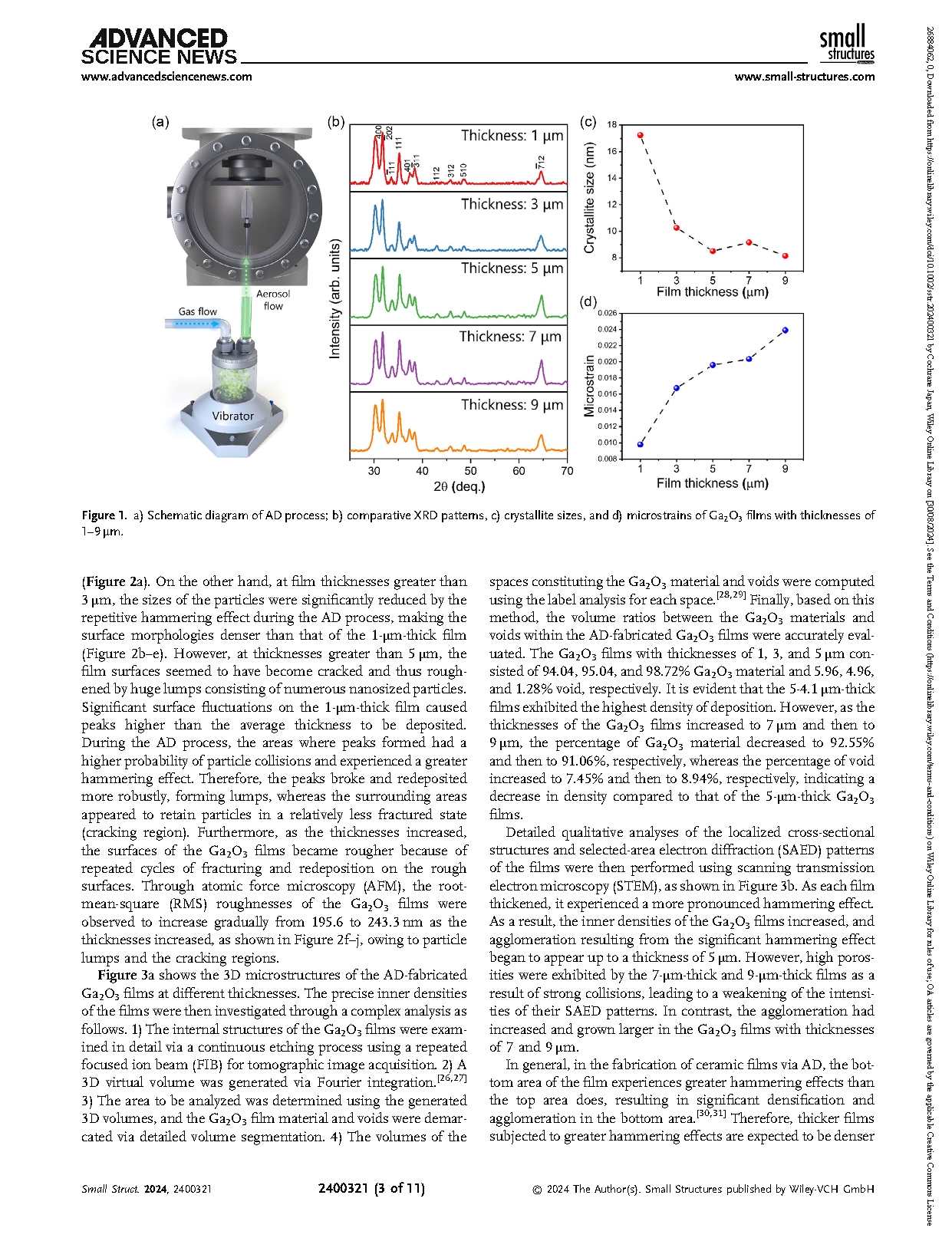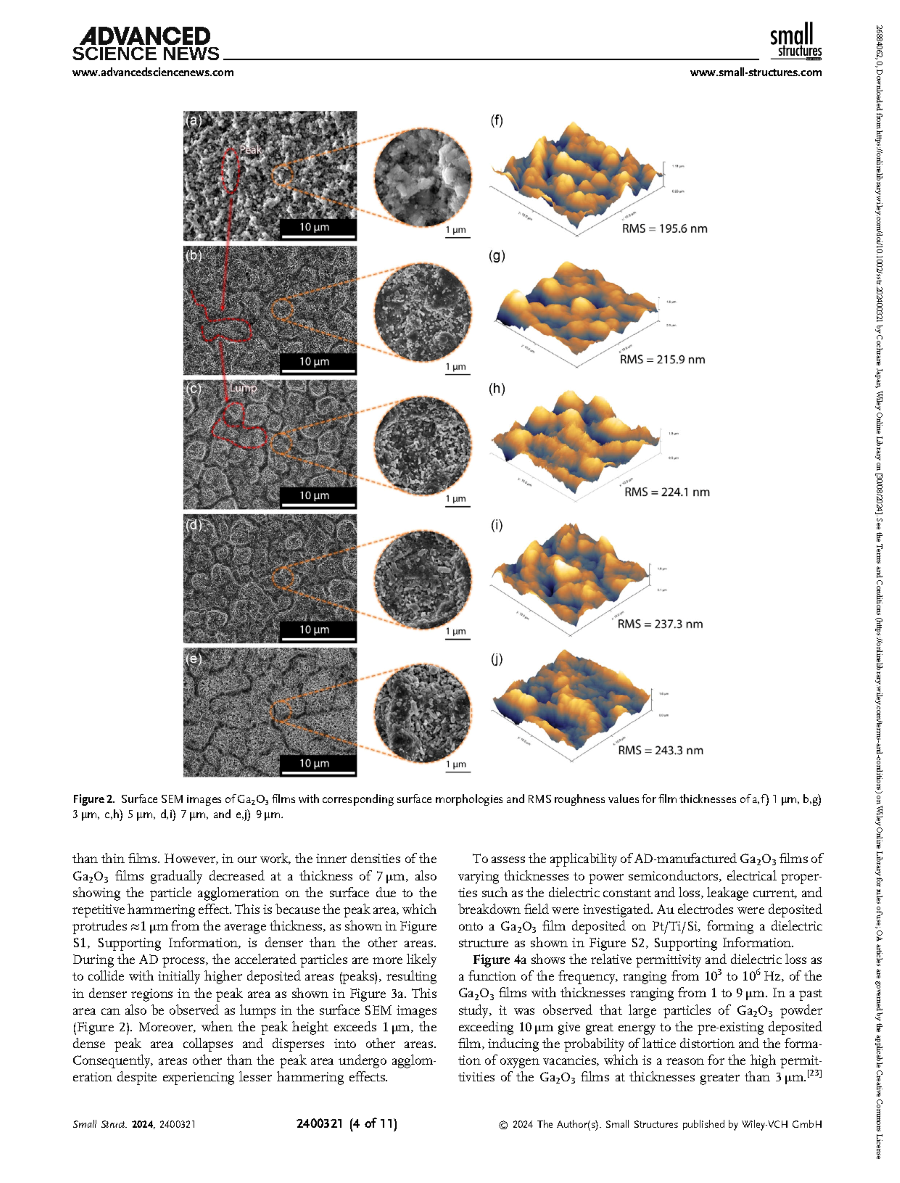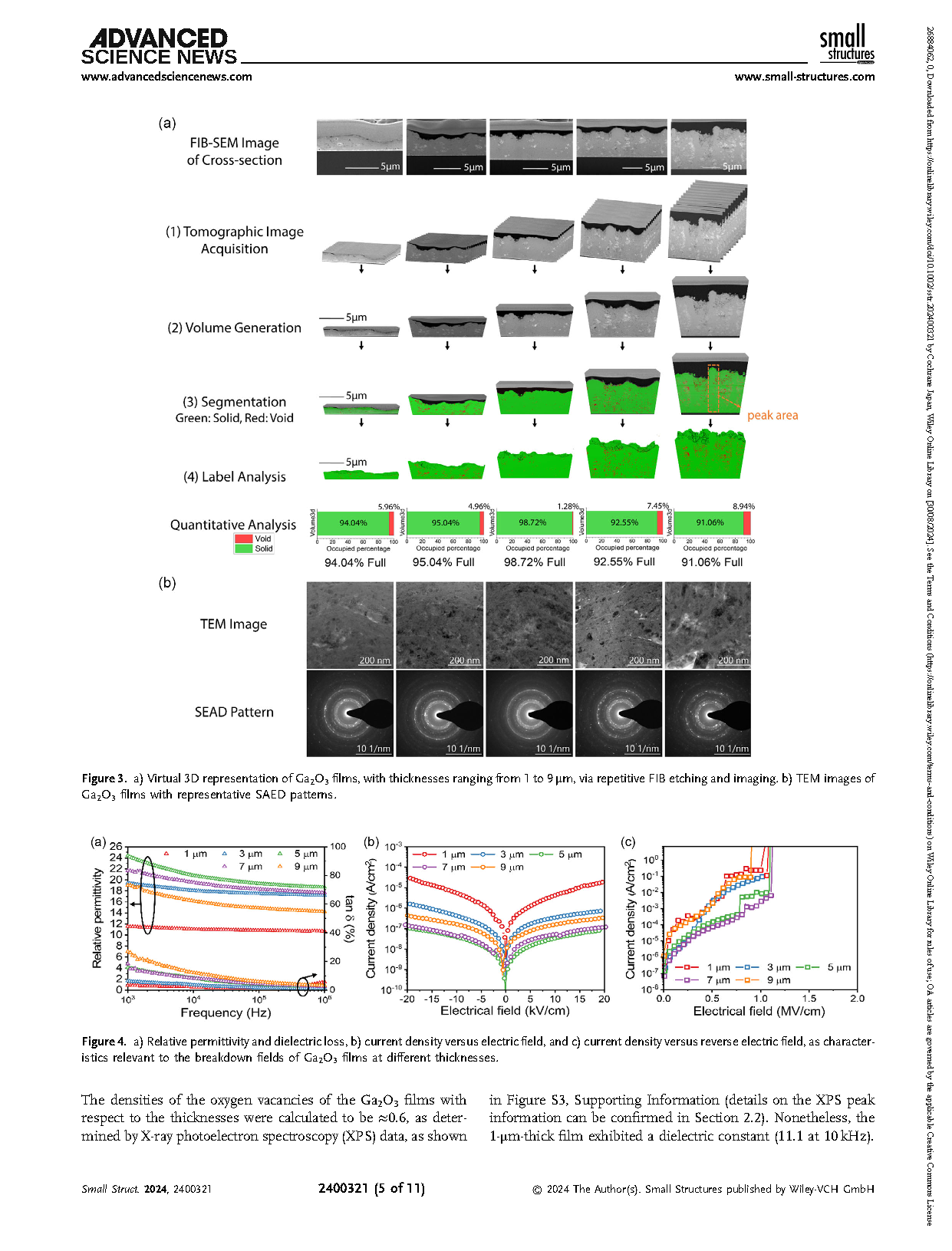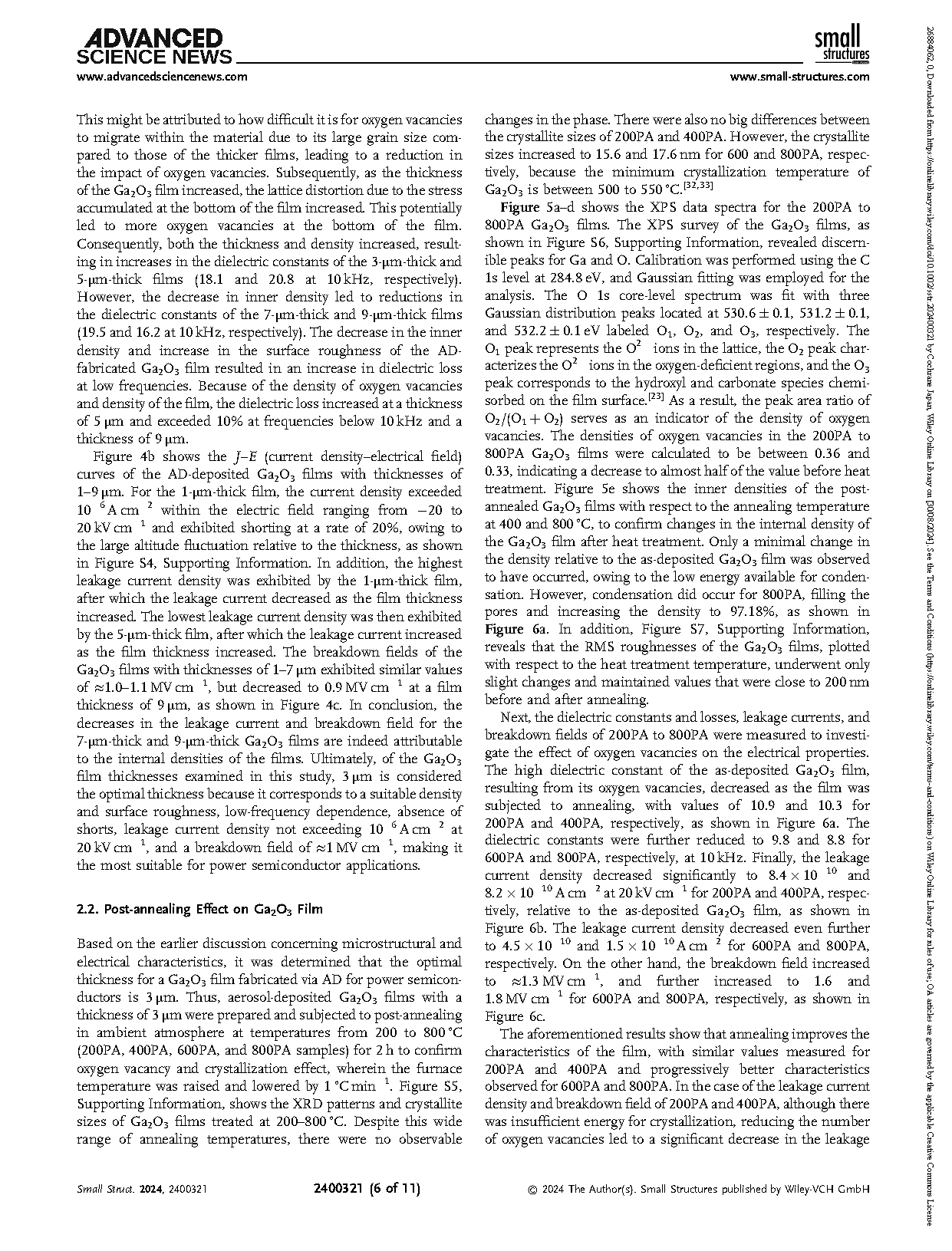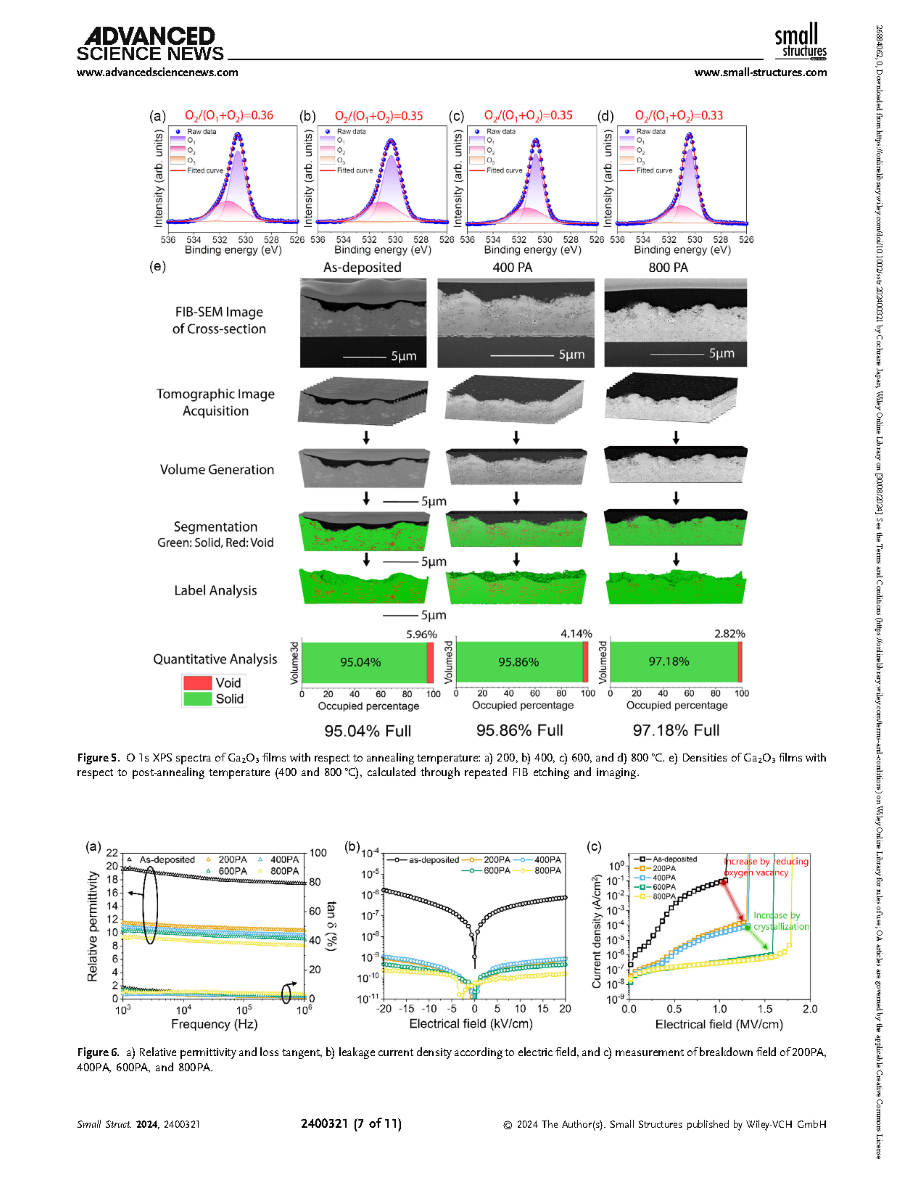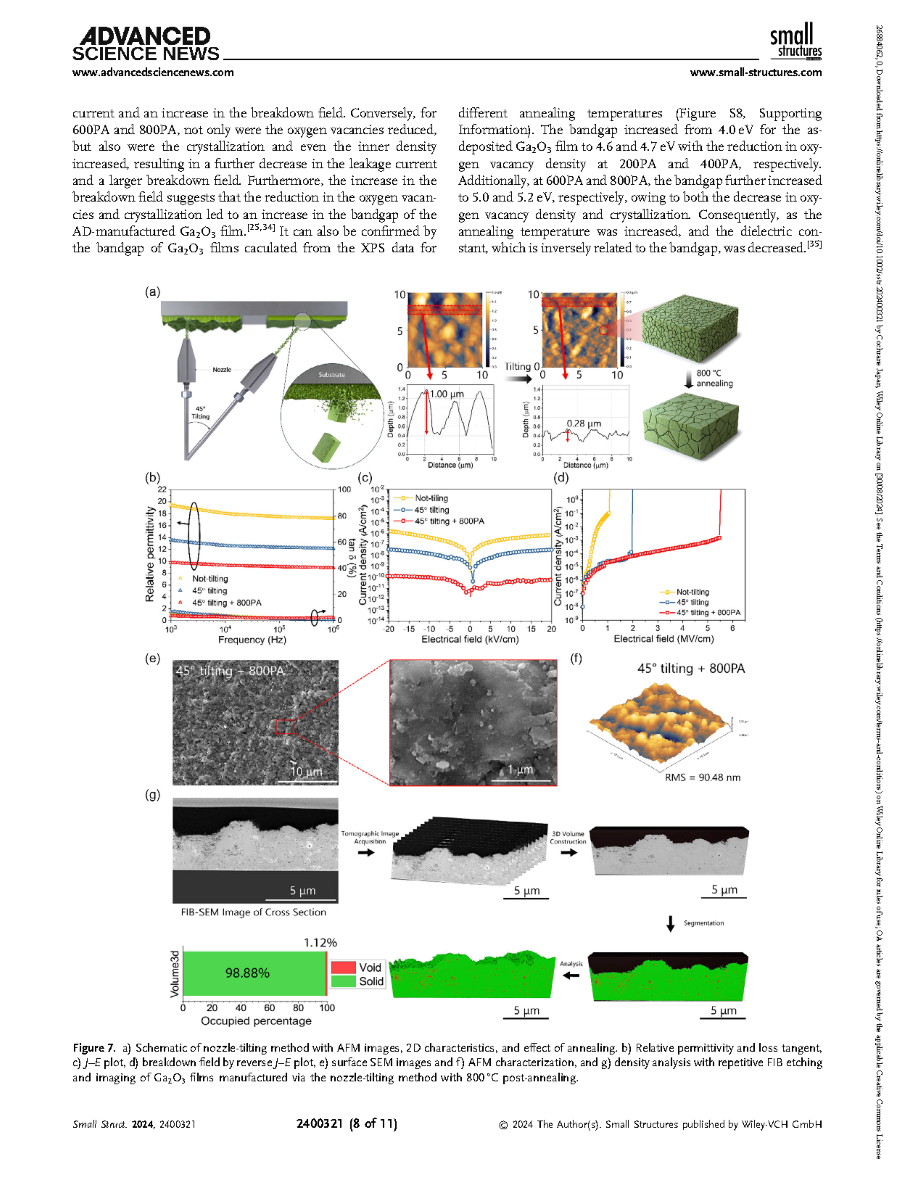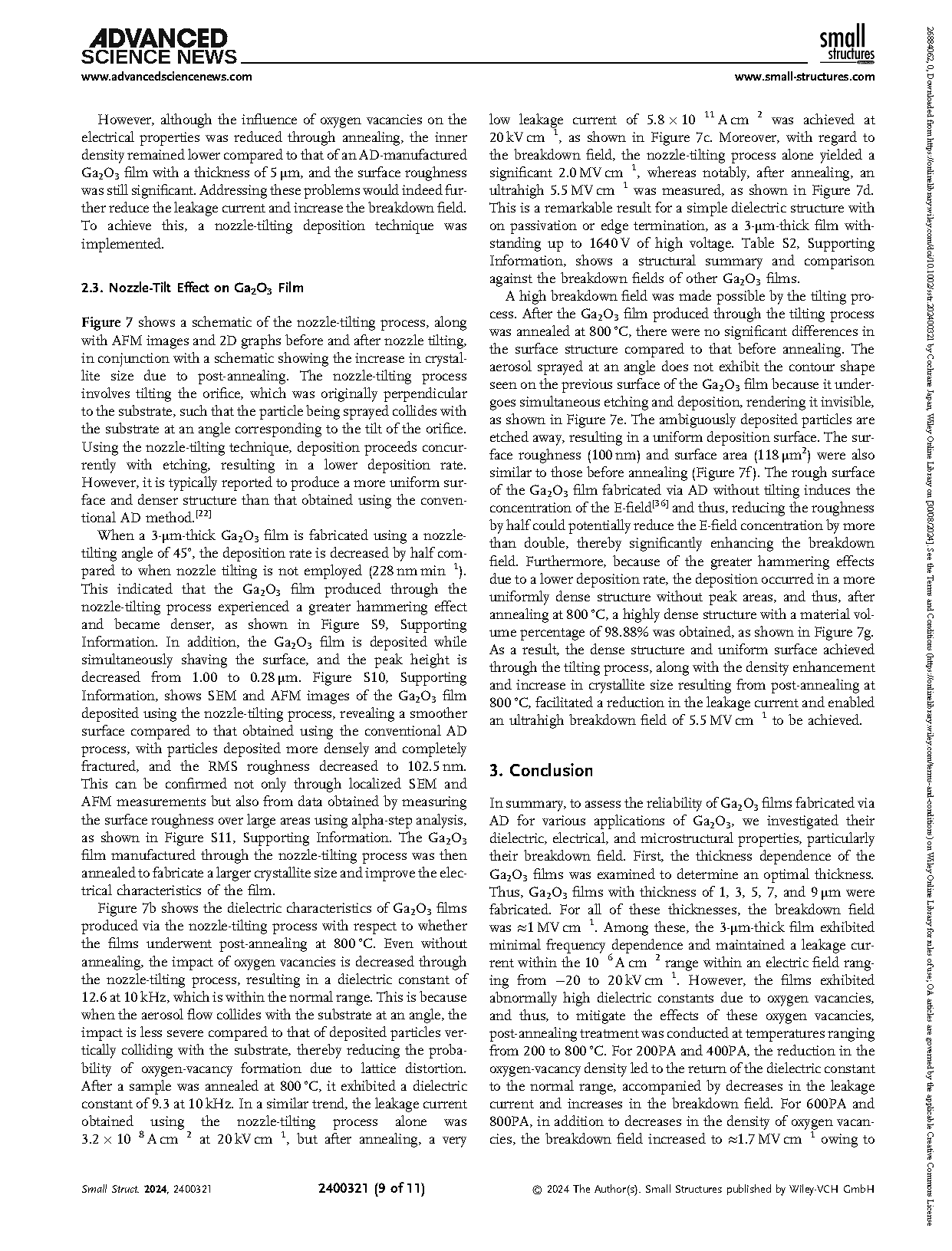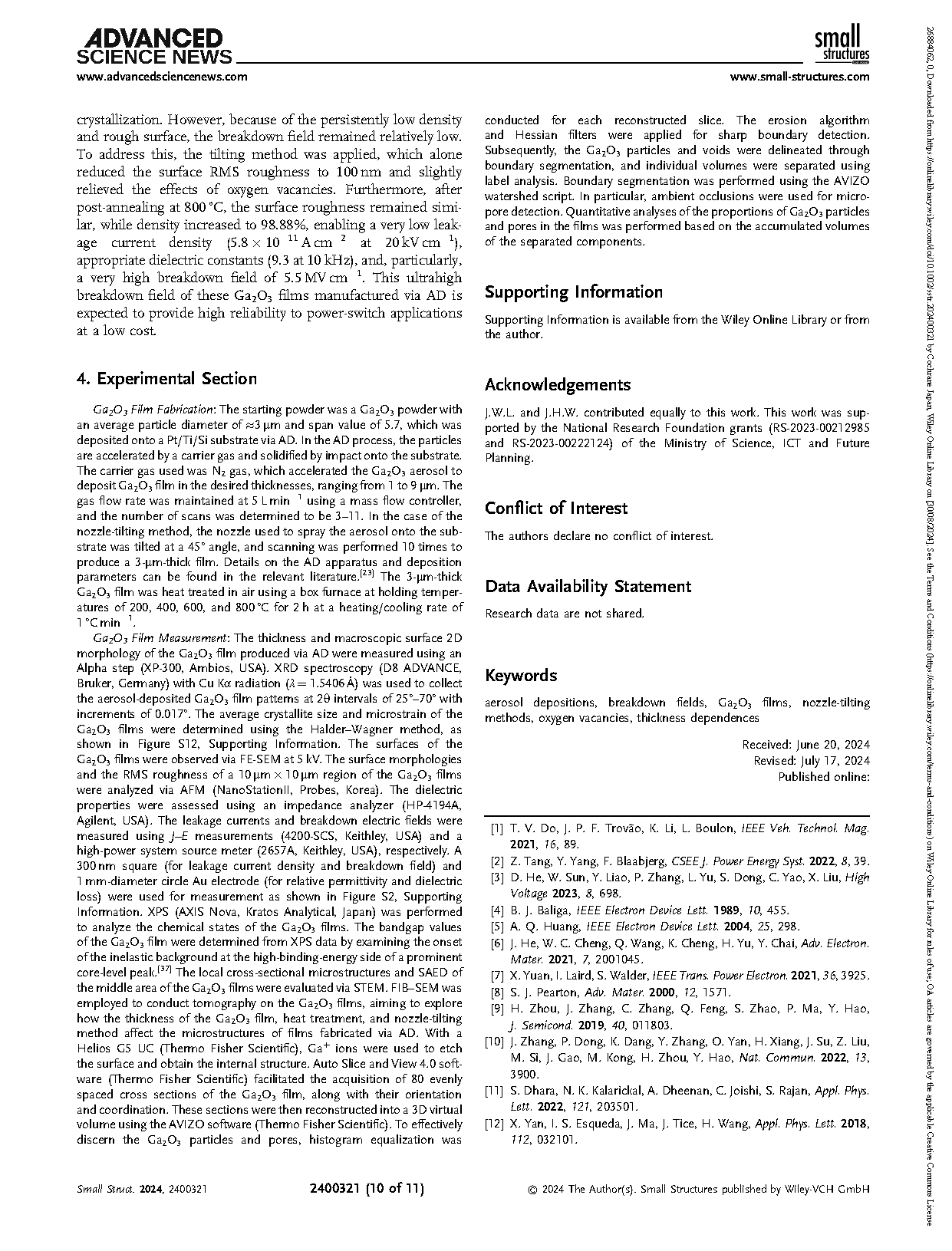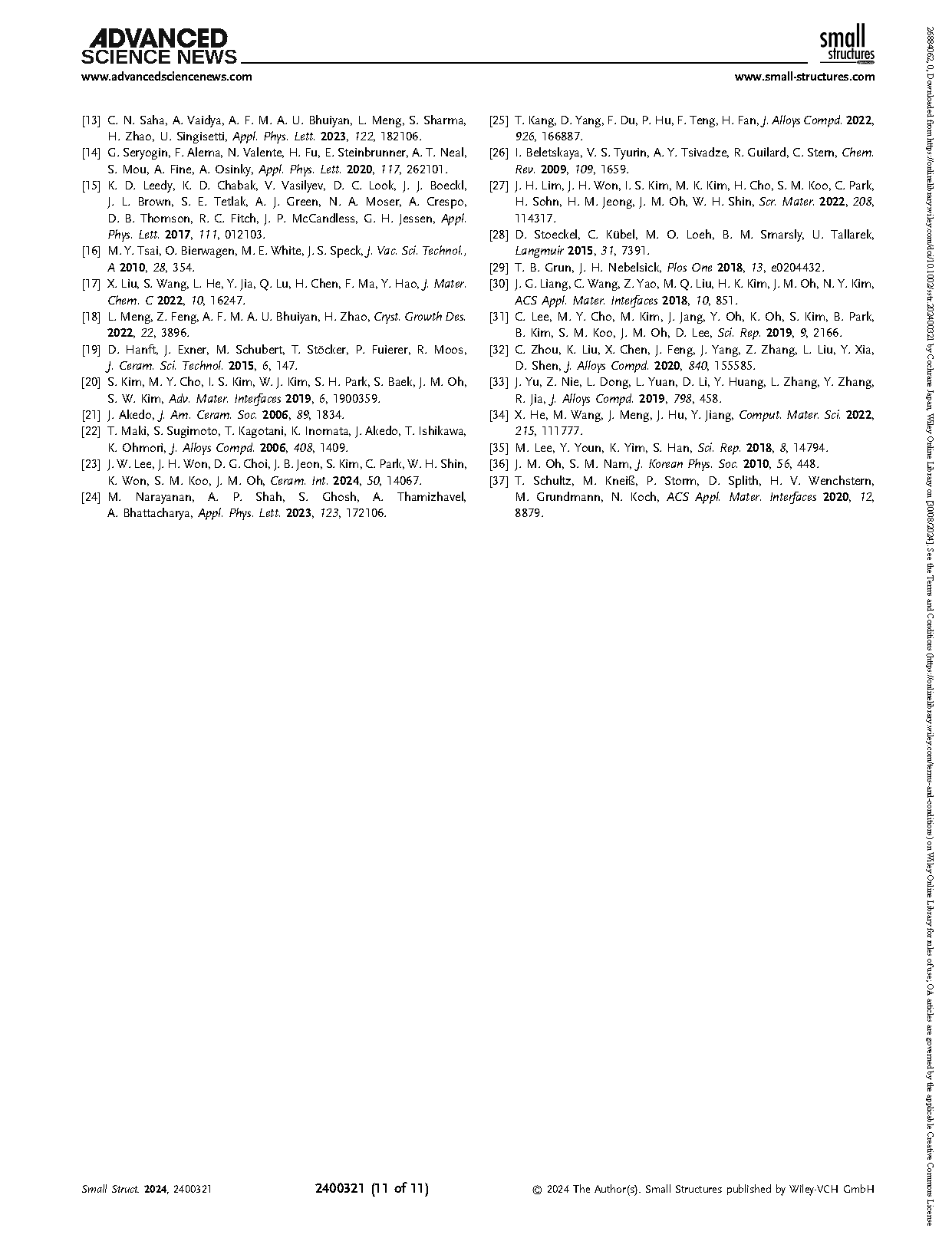
【International Papers】Ultrahigh Breakdown Field in Gallium (III) Oxide Dielectric Structure Fabricated by Novel Aerosol Deposition Method
日期:2024-11-25阅读:467
Researchers from the Kwangwoon University have published a dissertation titled "Ultrahigh Breakdown Field in Gallium (III) Oxide Dielectric Structure Fabricated by Novel Aerosol Deposition Method" in Small Structures.
Abstract
With the increasing demand for modern high-voltage electronic devices in electric vehicles and renewable-energy systems, power semiconductor devices with high breakdown fields are becoming essential. β-Gallium oxide (Ga2O3), which has a theoretical breakdown field of 8 MV cm−1, is being studied as a next-generation power-switch material. However, realizing a breakdown field close to this theoretical value remains challenging. In this study, an aerosol deposition-manufactured Ga2O3 film boasting an extremely high breakdown field, achieved through thickness optimization, heat treatment, and a unique nozzle-tilting method, is developed. This study explores the effect of oxygen vacancies on the dielectric constant, breakdown field, and microstructure of Ga2O3 films. Through these methods, Ga2O3 films with a denser (98.88%) and uniform surface, made less affected by oxygen vacancies through nozzle tilting and post-annealing at 800 °C, are produced, resulting in appropriate dielectric constants (9.3 at 10 kHz), low leakage currents (5.8 × 10−11 A cm−2 at 20 kV cm−1), and a very high breakdown field of 5.5 MV cm−1. The results of this study suggest that aerosol-deposited Ga2O3 layers have great potential to enable power switches with reliable switching.
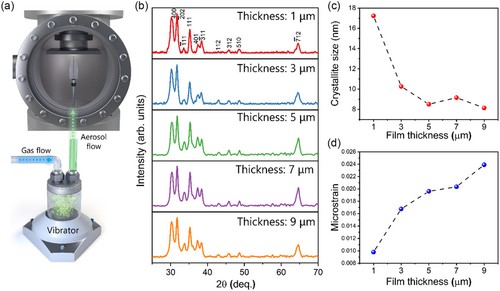
Figure 1.a) Schematic diagram of AD process; b) comparative XRD patterns, c) crystallite sizes, and d) microstrains of Ga2O3 films with thicknesses of 1–9 μm.

Figure 2.Surface SEM images of Ga2O3 films with corresponding surface morphologies and RMS roughness values for film thicknesses of a,f) 1 μm, b,g) 3 μm, c,h) 5 μm, d,i) 7 μm, and e,j) 9 μm.
DOI:
doi.org/10.1002/sstr.202400321
